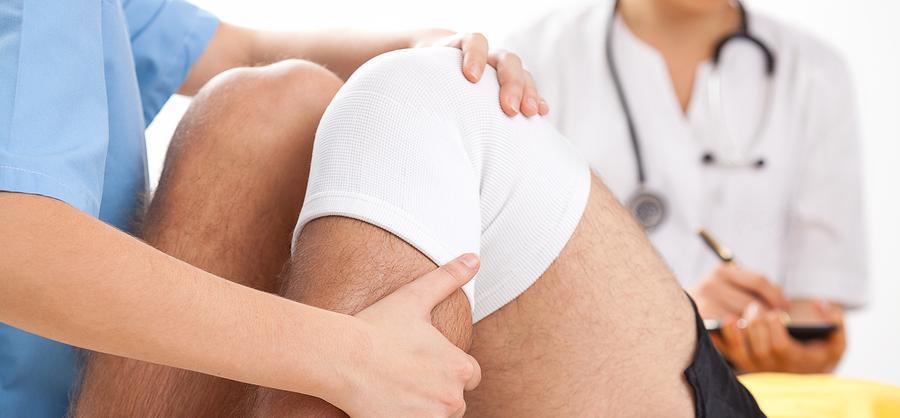You're in the middle of some fast-paced action. And then, there's a sudden stop, an awkward landing, or a quick turn, and pop! Immediately, that sound is followed by a sinking feeling in your stomach. Sound familiar? It probably does if you're facing surgery for a tear in your knee's anterior cruciate ligament.
Despite sometimes being called "the nastiest injury in sports," by Grantland, almost all ACL surgery recovery patients return to competition following surgery and rehabilitation. In fact, the American Academy of Orthopaedic Surgeons (AAOS) reports that 82–95 percent of people who go through ACL reconstructive surgery enjoy excellent results and full knee stability.
Understanding Your ACL
Your knee has several ligaments that connect bones to other bones. The anterior (front) cruciate ligament and the posterior (back) cruciate ligaments form a hinge joint that connects the femur (upper leg bone) to the tibia (lower leg bone). Along with two other ligaments, these parts stabilize the knee.
Unfortunately, ACL tears are becoming more common, with more young people engaged year-round in organized sports such as soccer, tennis, basketball, and football. In particular, female basketball and soccer players are between two to eight times more likely to injure their ACL, according to the American Orthopaedic Society for Sports Medicine.
Recognizing ACL Tear Symptoms
Knee pain, instability, and weakness are signs of a torn ACL. If pain continues beyond a few days, it's probably more than a simple sprain, and you should see an orthopedic specialist promptly. The AAOS states that when patients choose nonsurgical treatments, a secondary knee injury is more likely to occur.
The surgeon can't simply stitch the two pieces of the ligament together. A ligament is like a bundle of rubber bands that shreds, rather than one clean tear. Surgery involves transplanting a ligament or similar tissue from somewhere in your body or from tissue donated from a recently deceased person.
Preparing for ACL Surgery
Before surgery, you may have some physical therapy to loosen a swollen, stiff knee. Full range of motion prior to surgery will improve your chances of regaining full range of motion after surgery.
Most of the pre-surgery activity starts two weeks before your procedure and is similar to most standard surgery preparations. Your orthopedic specialist may ask you to stop taking medications that can make it difficult for blood to clot, including the painkillers ibuprofen and naproxen. You may need a pre-surgery exam by your personal physician, especially if you have a chronic issue such as heart disease or diabetes. To speed up healing, cut down on alcohol consumption and try to stop smoking. Your surgeon will give you specific instructions for the days and night before the surgery.
Recovery
Most people go home the day of surgery or the next day. There are certain things you'll need to do during the recovery process, especially one to four weeks after surgery:
- Keep the wound clean and dry.
- Reduce swelling and pain by icing the knee regularly (try bags of frozen peas).
- Discuss prescription pain medicine with your orthopedic specialist and take only as prescribed.
- Plan to be on crutches, using a cane, or wearing a brace for about a month or longer.
- Work with your physical therapist for four to six months to regain your motion and strength.
Above all, be careful going down steps, limit any motion of the knee, and abstain from any physical activity, especially during the first few weeks post-surgery. Follow your physician's guidance and prescribed physical therapy, and your ACL surgery recovery will be complete in about four to six months. If all goes well, over time, you'll be ready to resume much of the physical activity that you were used to before the injury.




